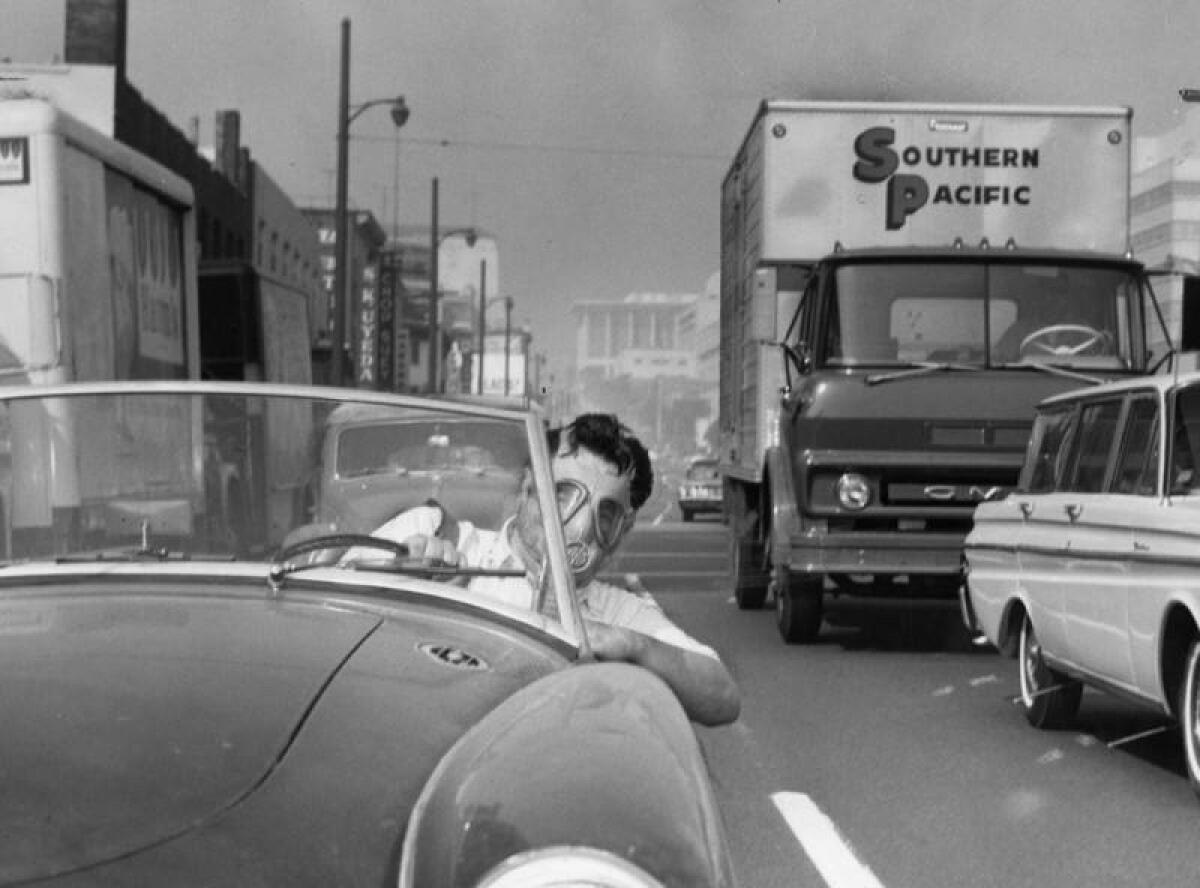Letters to the Editor: How L.A. cleaned up its smoggy air, no thanks to polluters like the oil industry

- Share via
To the editor: I can attest that Patt Morrison’s column on the history of smog in Southern California was right on, with a few exceptions. I was in the public information department at the Los Angeles County Air Pollution Control District (APCD) in the early 1950s.
Indeed, the high pressure that gives Los Angeles County its awesome weather also creates an inversion layer — a lid, in effect — over the basin, which is enclosed by mountains.
Omitted from the article is the tremendous opposition from all sources of pollution, most heavily from the petroleum industry, to any enforcement. The APCD determined, rightly, that every source of pollution, from the backyard incinerator to the automobile, had to be controlled.
We still have pollution, but it is far more bearable than in the 1950s, a time when if I went to speak about smog in the most devastated areas — such as Pasadena, sitting right against the foothills — I had to be accompanied by another APCD person so that I would not get attacked.
Martin A. Brower, Corona del Mar
..
To the editor: I grew up in the San Fernando Valley in the late 1940s and ’50s, and the air was as bad as Morrison’s article says. After playing outside, my lungs would hurt if I took a deep breath.
The article doesn’t mention the huge benefit we received from catalytic converters on cars after federal law required them on new vehicles after 1975. Despite huge resistance from auto manufacturers at the time, within a decade the air in L.A. was significantly better, and red eyes and sore lungs slowly faded from memory.
Carl Kim Allender, Glendale
..
To the editor: Growing up in Boyle Heights in the early 1950s, I remember residents being allowed to burn their trash in backyard incinerators. During heavy smog days — and there were many — just walking the three blocks to my elementary school caused chest pains from breathing the foul air.
Today, I gauge the quality of the air every morning from my house by looking down the San Gabriel Valley toward the San Gabriel Mountains. For most of the year, the mountains are visible, but the air quality can vary between sunrise and sunset. In the morning, generally there is a layer of smog setting over the valley, but by the afternoon, winds coming from the Pacific blow the pollution east.
In my estimate, the air quality has vastly improved since the ’50s.
Larry Naritomi, Monterey Park





